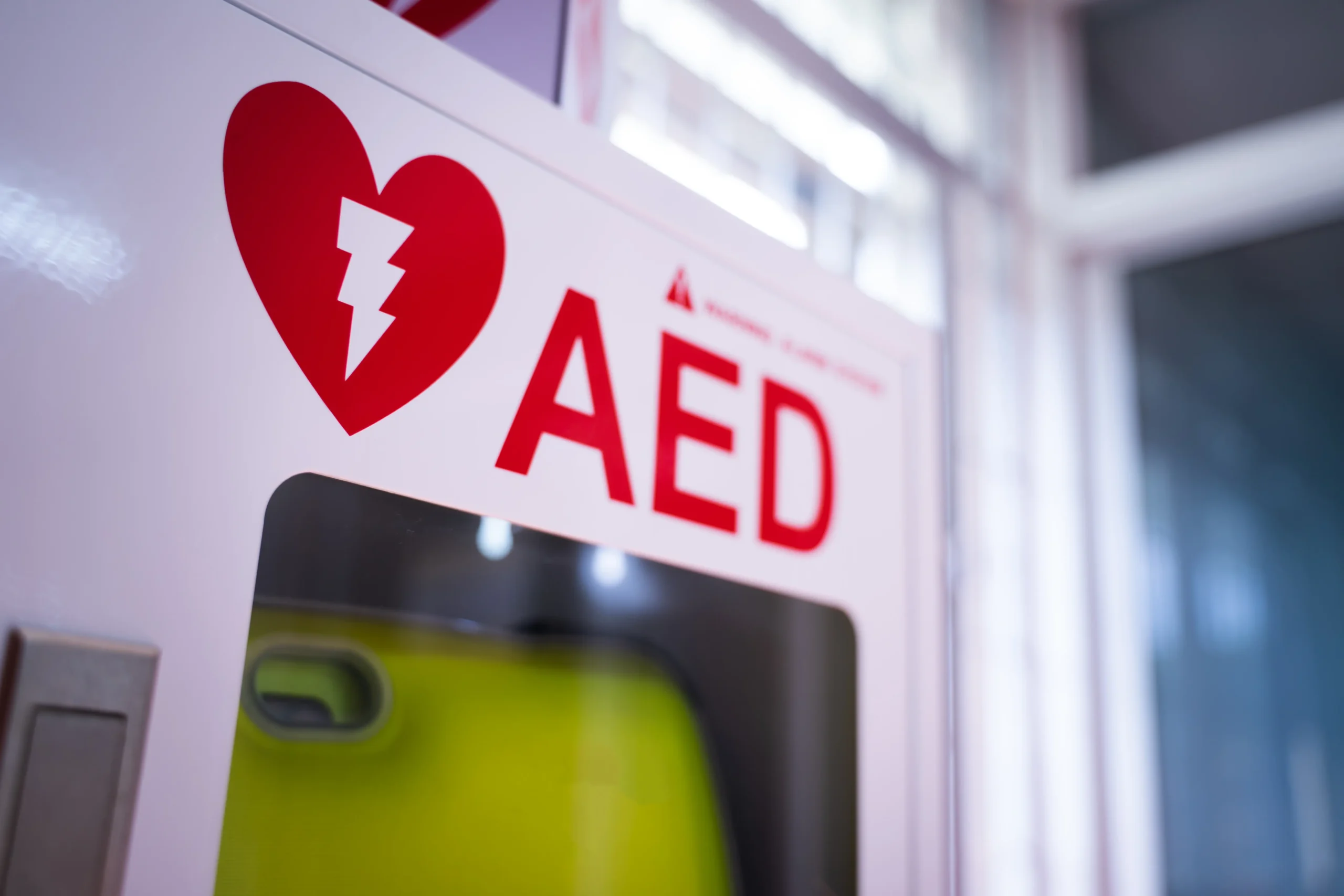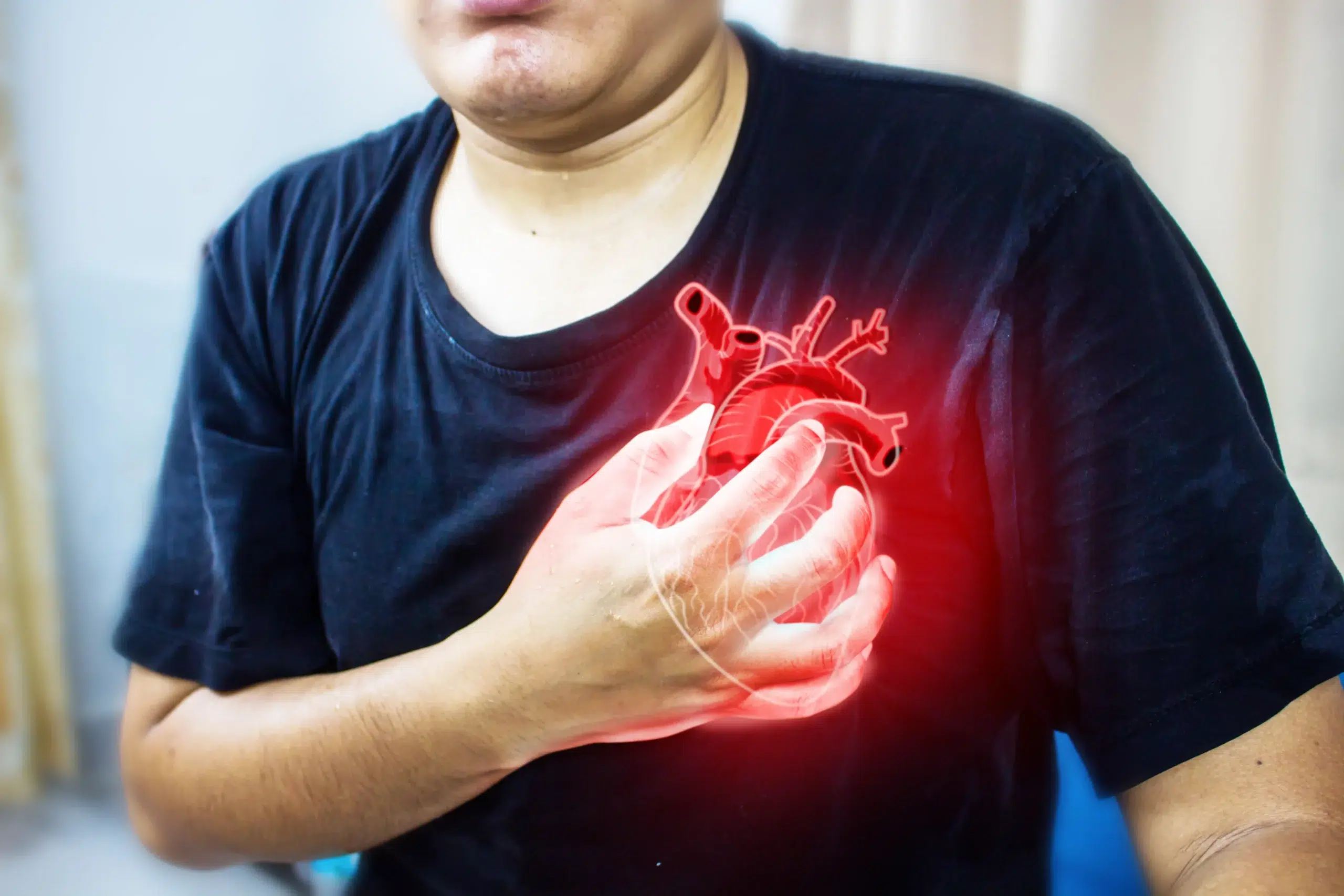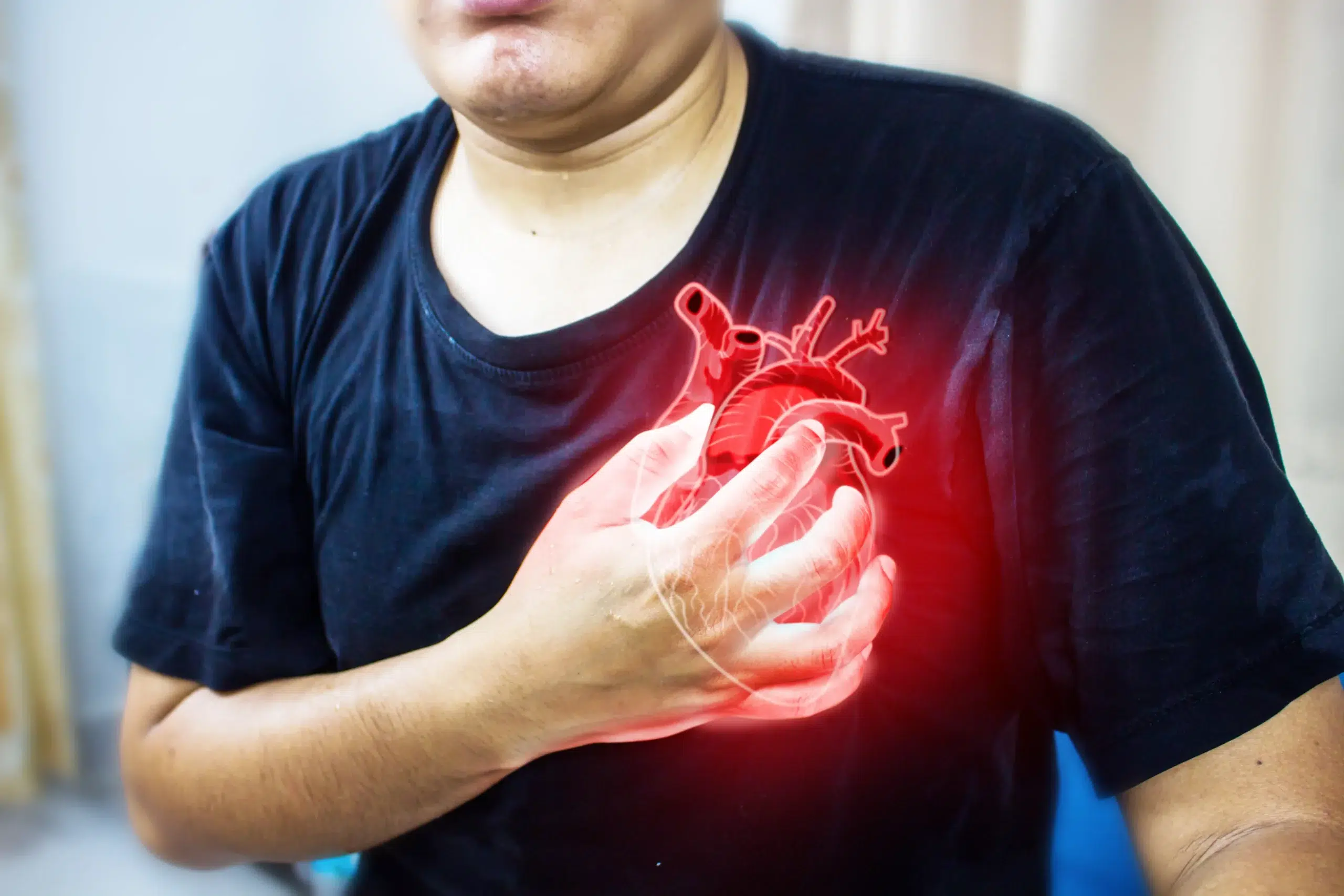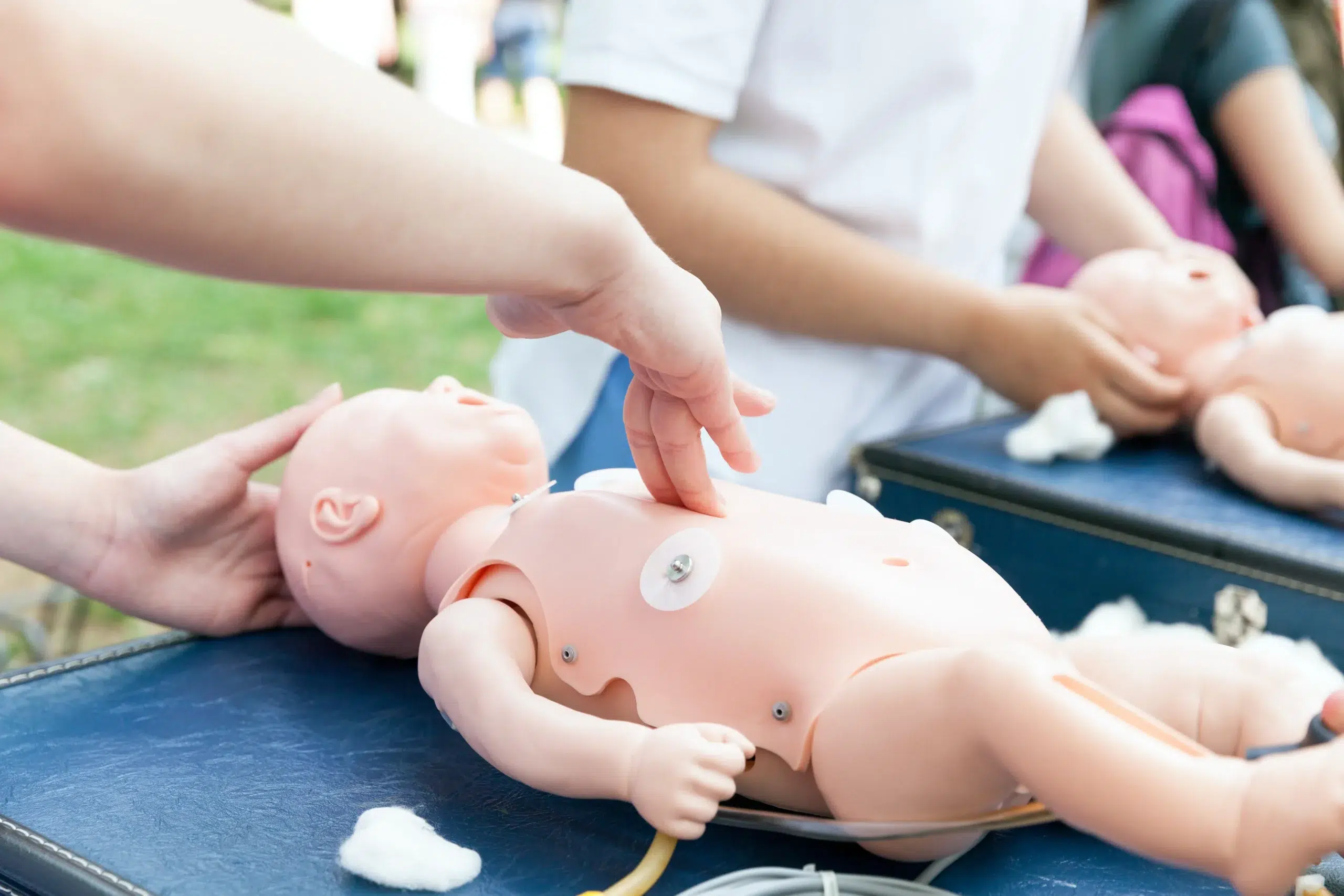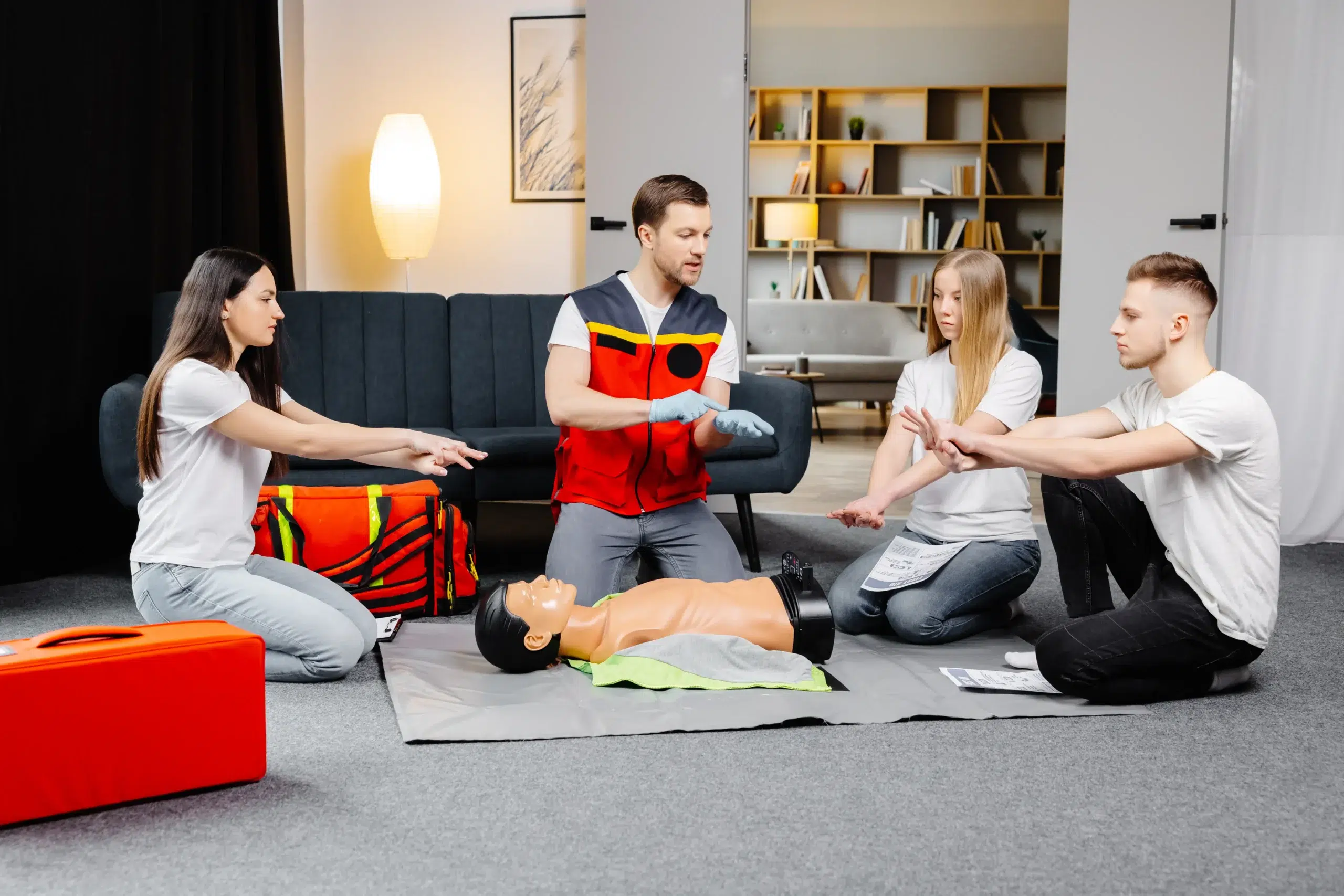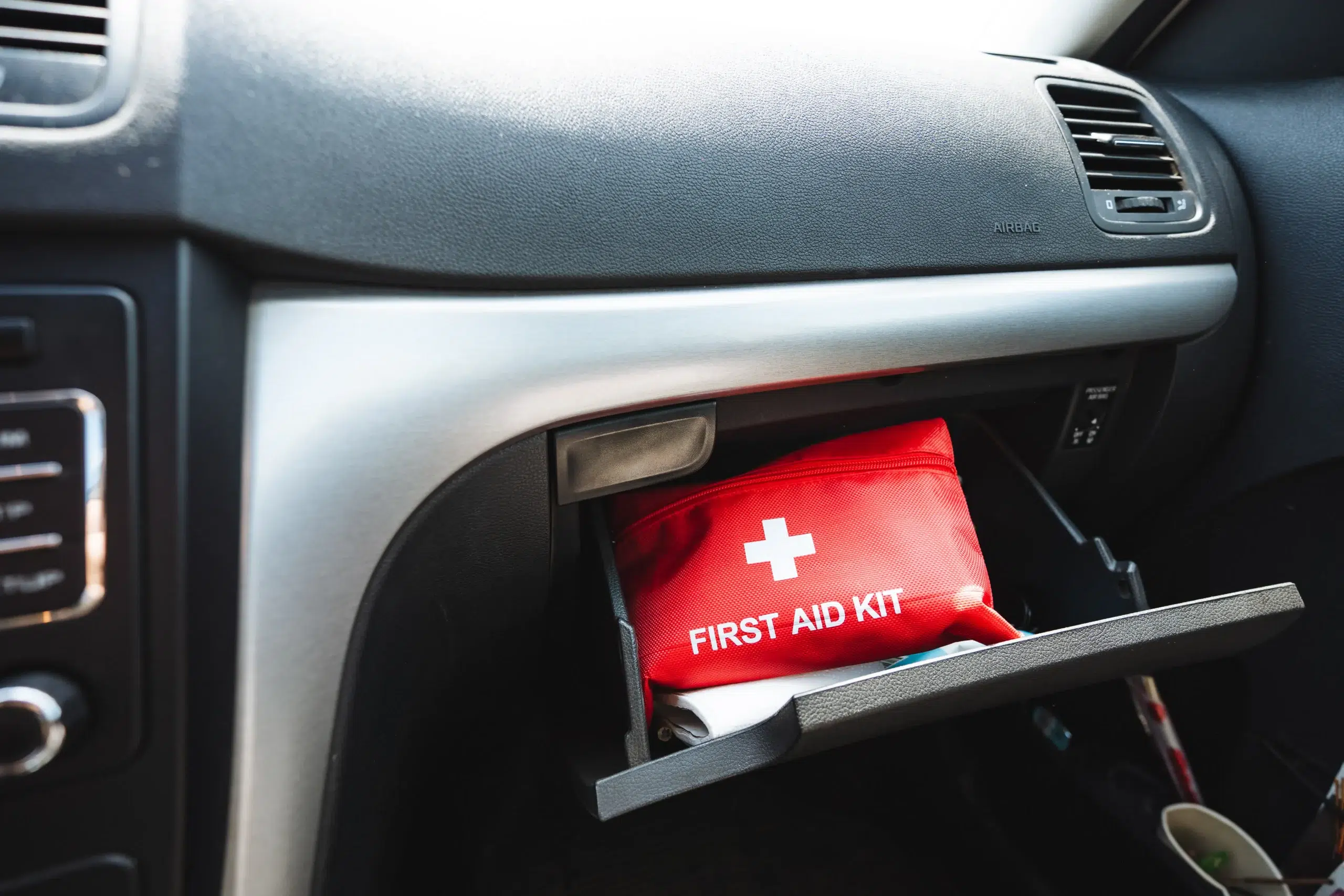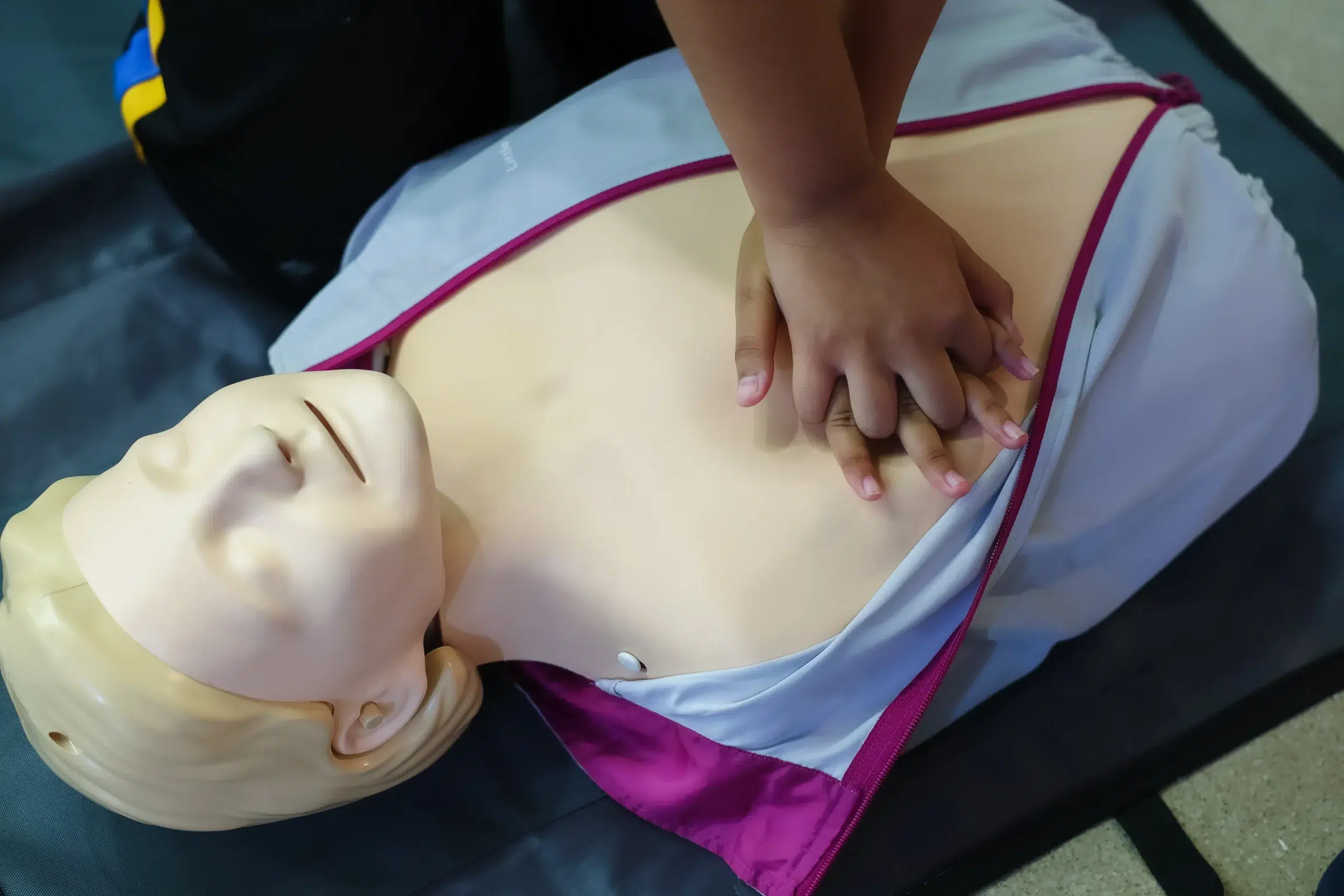When a medical emergency strikes, seconds can matter. Understanding the EMS services in Roseville available to you and your family can make all the difference. This comprehensive guide explores the various facets of EMS services in Roseville, including the key providers like American Medical Response (AMR) and the Roseville Fire Department, the types of services they offer, and how to access them quickly. We’ll also cover the training and certifications required for EMS professionals, the importance of community health initiatives, and how you can contribute to a safer community. Finally, we’ll debunk some common misconceptions about EMS, giving you a clearer picture of this vital service.
Key Takeaways
- Roseville’s EMS network offers comprehensive care: From emergency response to non-emergency transport, specialized services like community paramedicine ensure residents have access to appropriate medical care. Familiarize yourself with key providers like AMR, AlphaOne, and the Roseville Fire Department.
- Personal preparedness empowers you: Create a family emergency plan, learn CPR and first aid, and assemble an emergency kit. These proactive steps can make a significant difference during a crisis.
- Support your local EMS providers: Recognize the broad scope of EMS, from on-scene care to community health initiatives. Consider supporting training organizations like Roseville CPR Classes that strengthen the community’s emergency response capabilities.
What are EMS Services in Roseville?
Emergency Medical Services (EMS) in Roseville provide immediate medical care and transportation for people experiencing medical emergencies. These services are vital for ensuring the health and safety of our community. Think of EMS as a lifeline, ready to respond 24/7 when unexpected medical crises arise. From sudden illnesses to serious accidents, EMS providers are trained to handle a wide range of situations, offering a crucial link to definitive medical care at hospitals and other healthcare facilities. They are equipped to stabilize patients on-site, administer life-saving interventions, and transport individuals quickly and safely to the appropriate medical setting. In Roseville, several providers work together to form a comprehensive EMS network. This collaborative approach ensures that residents have access to the necessary medical attention when they need it most.
Available EMS Services
Knowing what EMS services are available in your community can be incredibly valuable, especially in times of crisis. Roseville and the surrounding areas offer a range of services to meet diverse needs, from immediate emergency response to non-urgent medical transport. Let’s explore these services so you can better understand how they support the community.
Emergency Response
When a medical emergency strikes, a rapid response is crucial. In Roseville and surrounding areas like Sacramento and Placer Counties, American Medical Response (AMR) plays a significant role, handling a substantial volume of emergency calls annually. Their trained paramedics are equipped to provide immediate, on-site medical care and transport patients to the nearest appropriate medical facility. Knowing that such a comprehensive emergency response system is in place can offer peace of mind.
Non-Emergency Medical Transport
Not every medical situation requires a lights-and-sirens response. For non-emergency situations, services like AlphaOne Ambulance offer medical transport. This can include transportation between hospitals, from a nursing home to a doctor’s appointment, or for patients needing specialized medical equipment during transport. They also provide critical care transport with advanced life support capabilities. This type of service ensures patients receive the appropriate level of care while traveling to and from medical facilities.
Community Paramedicine Programs
Community paramedicine programs represent a proactive approach to healthcare, bridging gaps in traditional outpatient services. These programs bring healthcare directly to the patient’s home, often focusing on preventive care and management of chronic conditions. This model can be particularly helpful for individuals in rural areas or those with limited mobility. While still an evolving field, community paramedicine holds significant promise for improving healthcare access and reducing hospital readmissions.
Event Medical Support
Large events, from concerts to sporting competitions, require specialized medical support to ensure the safety of attendees. Companies like Performance EMS offer on-site medical services for events in California. Their teams of medical professionals, including EMTs, paramedics, and registered nurses, are prepared to handle a wide range of medical situations, providing immediate care and coordinating transport to hospitals if necessary. This specialized service allows event organizers to focus on the event itself, knowing that medical needs are being expertly managed.
Key EMS Providers in Roseville
Knowing the key EMS providers in your area helps you understand the resources available in your community. Here are some of the prominent EMS providers serving Roseville:
American Medical Response (AMR)
AMR Sacramento Valley provides emergency medical transport for eight communities in the Sacramento, Placer, and Yolo County areas. Employing approximately 300 paramedics and EMTs, AMR handles a high volume of calls each year, playing a vital role in the region’s emergency medical system.
AlphaOne Ambulance
AlphaOne Ambulance Medical Services offers 24/7 service in Sacramento County. Their teams include paramedics and EMTs with specialized geriatric training, highlighting their commitment to serving a wide range of patient needs.
Performance EMS
Performance EMS focuses on event medical services, staffing experienced EMTs, paramedics, and retired fire chiefs. This focus on comprehensive medical services for events across California makes them a valuable resource.
Roseville Fire Department
The Roseville Fire Department plays a crucial role in local EMS response. Their strategically located fire stations ensure quick response times for both fires and medical emergencies, improving the city’s overall emergency preparedness.
Ensuring Quality Care and Safety
The effectiveness of EMS services hinges on well-trained personnel, adherence to safety protocols, and access to advanced life-saving equipment. These factors work together to ensure positive patient outcomes and maintain a high standard of care within the Roseville community.
Required Training and Certifications
EMS providers in Roseville, much like those throughout California, undergo rigorous training and obtain certifications. These certifications, often granted through organizations like the American Heart Association (AHA), ensure that professionals possess the necessary skills and knowledge to handle various medical emergencies. Common certifications include Basic Life Support (BLS), Advanced Cardiac Life Support (ACLS), and Pediatric Advanced Life Support (PALS). For those interested in obtaining these certifications, you can explore the courses offered by Roseville CPR Classes, an AHA Training Center. They cover everything from CPR and first aid to specialized courses like the EMSA Child Care Health & Safety program. You can find more information on their website for BLS, ACLS, and other courses. These certifications equip EMS personnel to respond effectively to cardiac arrests, respiratory emergencies, and other critical situations.
Safety Protocols and Guidelines
Stringent safety protocols and guidelines are vital for protecting both patients and EMS providers. These protocols dictate best practices for everything from infection control and patient handling to safe ambulance operation. Agencies like Contra Costa County EMS demonstrate a commitment to quality improvement through ongoing training and education initiatives, ultimately aiming to enhance prehospital care and improve patient outcomes. These measures ensure a safe and efficient response while minimizing risks.
Advanced Life Support Equipment
Access to advanced life support equipment is crucial for effective prehospital care. This equipment can range from defibrillators and advanced airway management tools to cardiac monitors and medications. Having the right tools readily available allows EMS providers to deliver immediate, life-saving interventions in the field, stabilizing patients and increasing their chances of survival. Facilities like Sutter Roseville Medical Center offer advanced training on this equipment, ensuring professionals are proficient in its use.
Accessing EMS Services in Roseville
Knowing how to access emergency medical services (EMS) quickly can be crucial during a crisis. This section outlines how to contact EMS providers in Roseville, what to expect during an emergency call, and why a family emergency plan is essential.
Contacting EMS Providers
In Roseville, 911 is the primary number to contact EMS during emergencies. This universal number connects you to dispatchers who coordinate the appropriate response, including ambulance services and the fire department. American Medical Response (AMR) is a key EMS provider in the Roseville area, serving a large portion of Placer County. Remember to reserve 911 for true emergencies requiring immediate medical attention. For non-emergencies, contact your primary care physician or an urgent care facility.
What Happens During an Emergency Call?
When you call 911, clearly and concisely explain the situation. The dispatcher will ask about the nature of the emergency, the location, and the number of people involved. Stay calm and answer their questions accurately. Trained EMS professionals will then be dispatched to your location. They will stabilize patients on-site, provide necessary medical care during transport, and ensure a smooth handoff to hospital staff.
Create a Family Emergency Plan
A family emergency plan helps you respond effectively during unexpected events. This plan should include designated meeting points, emergency contact information, and procedures for various scenarios like fires or medical emergencies. Consider researching community paramedicine programs, which offer valuable resources, especially for underserved communities. These programs connect patients with appropriate care and may reduce emergency room visits. Discuss the plan with your family and practice it regularly so everyone knows what to do.
Cost of EMS Services
Understanding the costs associated with Emergency Medical Services (EMS) can help you prepare for potential emergencies. Let’s break down the typical fees, insurance coverage options, and explore payment assistance programs available in Roseville.
Typical Fees
In Roseville, the cost for EMS is determined by the Emergency Medical Services First Responder Fee, established under the Roseville Municipal Code. This fee structure is a cost recovery mechanism for first responder paramedic services, provided by our local firefighters who are also trained paramedics. It covers the costs tied to emergency medical services requiring transport to a hospital via ambulance. This fee applies to both residents and non-residents of Roseville.
Insurance Coverage Options
It’s important to understand how your insurance impacts EMS costs. The average cost of an ambulance ride in the US hovers around $1,300, but this can fluctuate based on the level of care you receive and the distance traveled. With insurance, your out-of-pocket expense averages around $450, though it could exceed $1,000 in some states. Your coverage typically depends on the type of service provided—like basic or advanced life support—and might involve a combination of flat rates and mileage fees. Check your specific policy for details.
Payment Assistance Programs
While specific payment assistance programs for EMS services in Roseville aren’t readily detailed online, it’s always worth exploring potential financial assistance. Reach out to the Roseville Fire Department or your local health services to inquire about available options. Many communities offer programs to help individuals manage the costs associated with emergency medical care, so don’t hesitate to ask.
Community Health Initiatives and Specialized Services
Beyond responding to immediate emergencies, EMS providers in Roseville and surrounding areas play a vital role in community health initiatives. These programs aim to improve overall health outcomes through preventative care, specialized training, and targeted interventions. Let’s explore some key areas where these initiatives make a difference.
Public Education and Training
Knowledge empowers communities. Public education programs equip individuals with life-saving skills like CPR and first aid. These initiatives, often led by organizations like the Roseville Fire Department, train residents to respond effectively during medical emergencies. This widespread training creates a network of prepared individuals who can provide immediate assistance while professional help is on the way. For those looking to expand their skills, resources like the Northern CA CPR Directory offer a comprehensive list of training providers.
Preventive Care Programs
Preventive care plays a crucial role in reducing the burden on emergency services. Programs like Community Paramedicine (CP) and Mobile Integrated Health (MIH) bring healthcare directly to patients’ homes. These services focus on managing chronic conditions, providing preventative care, and reducing unnecessary hospital readmissions. By addressing health concerns early on, these programs help individuals avoid escalating health crises that require emergency intervention. Learn more about Community Paramedicine and Mobile Integrated Health.
Pediatric and Geriatric Emergency Care
Children and older adults often have unique medical needs during emergencies. EMS providers receive training to address these specific needs, ensuring appropriate and effective treatment. MIH teams, which include various healthcare professionals like nurses, paramedics, and social workers, collaborate to deliver comprehensive care tailored to these vulnerable populations. This collaborative approach ensures patients receive the right level of care at the right time.
Mental Health Crisis Response
EMS professionals are increasingly involved in responding to mental health crises. They receive specialized training to de-escalate situations, provide immediate support, and connect individuals with appropriate mental health resources. This crucial role helps ensure that individuals experiencing a mental health crisis receive compassionate and effective care. This approach also diverts individuals from emergency rooms and connects them with long-term support. The National Conference of State Legislatures highlights the importance of community paramedicine in extending the reach of mental healthcare services, especially in underserved areas.
Preparing for Emergencies
While we rely on the expertise of Emergency Medical Services (EMS) professionals like those at the Roseville Fire Department, being prepared for emergencies ourselves can make a real difference. Taking a few proactive steps can empower you to handle unexpected situations and potentially save lives.
Build an Emergency Kit
A well-stocked emergency kit is your first line of defense in any crisis. Think of it as your personal safety net, providing essential supplies when you need them most. Your kit should include items like non-perishable food, bottled water, a first-aid kit, medications, a flashlight, and extra batteries. Keep your kit easily accessible, and make sure everyone in your household knows where it is. Ready.gov offers a comprehensive list of emergency supplies to get you started.
Stay Informed About Local Alerts
Staying informed about local alerts and potential hazards is crucial for your safety. Sign up for emergency notifications from your city or county to receive timely updates on evacuations, severe weather, and other critical events. Resources like the National Weather Service and your local news channels can also keep you informed about developing situations. Knowing what’s happening in your community allows you to react quickly and protect yourself and your family.
Learn Basic First Aid and CPR
Equipping yourself with basic first aid and CPR skills can empower you to assist others during emergencies. These skills can bridge the gap before professional help arrives, potentially saving lives. Roseville CPR Classes offers a range of American Heart Association (AHA)-certified courses in CPR, BLS, ACLS, PALS, and First Aid. Learning these essential skills can give you the confidence to respond effectively in critical situations and provide immediate assistance to those in need. Check out our low price guarantee and consider signing up for a class today. We also offer discounts for group classes.
How Roseville CPR Classes Supports Local EMS
Roseville CPR Classes plays a vital role in supporting the local Emergency Medical Services (EMS) system by providing high-quality training and education to both healthcare professionals and the wider community. This commitment to comprehensive training strengthens the overall effectiveness of emergency medical response in Roseville, Rocklin, and Sacramento.
Comprehensive Training Programs
Roseville CPR Classes offers a wide range of training programs designed to meet the diverse needs of our community. These courses cover essential life-saving skills, from basic CPR and First Aid to advanced certifications like BLS, ACLS, and PALS. We also offer specialized training, such as the EMSA Child Care Health and Safety course, crucial for childcare providers in California. This comprehensive approach ensures that individuals at all levels of experience can acquire the skills necessary to respond effectively in medical emergencies.
Certification Courses for Healthcare Professionals
For healthcare professionals, maintaining up-to-date certifications is essential. Roseville CPR Classes provides AHA-certified courses in BLS, ACLS, and PALS, equipping professionals with the knowledge and skills to deliver high-quality patient care in critical situations. Our affiliation with Safety Training Seminars, an American Heart Association Training Center, guarantees that our instruction meets the highest standards. This commitment to excellence ensures that healthcare providers in our community are well-prepared to handle medical emergencies with confidence and competence. For convenient skills verification, we also offer the RQI program.
Community CPR and First Aid Education
Beyond professional certifications, Roseville CPR Classes empowers individuals throughout the community with life-saving skills. By offering accessible and affordable CPR and First Aid training, we equip everyday citizens to respond effectively during emergencies. This widespread training creates a network of prepared individuals who can provide immediate assistance while awaiting the arrival of professional EMS personnel. This community-based approach strengthens the chain of survival and improves outcomes in medical emergencies. See our low price guarantee for more information.
Common Misconceptions About EMS Services
It’s easy to misunderstand the full scope of Emergency Medical Services (EMS). Let’s clear up a few common misconceptions about the vital work these professionals do.
EMS Does More Than Transport
Many people think EMS is simply about transporting patients to the hospital. In reality, EMS professionals do much more than that. They provide a wide range of on-scene medical care, from stabilizing injuries and administering medications to performing life-saving procedures. This immediate intervention is crucial for improving patient outcomes. They also ensure a smooth transfer of care to hospital staff, providing valuable information about the patient’s condition and treatment. This comprehensive approach goes far beyond just getting someone to the hospital. The South Carolina EMS Association offers more information about the crucial role of EMS.
The Scope of EMS Responses
Another misconception is that EMS only responds to medical emergencies. While medical emergencies are a core part of their work, EMS professionals also respond to car accidents, natural disasters, and other crises. They are often the first on the scene, providing immediate assistance and coordinating with other emergency services. This broad scope of response makes EMS a critical component of community safety. Healthcare Business Today offers further insights into the diverse responsibilities of EMS.
Understanding EMS Provider Levels
It’s also important to understand that there are different levels of training and certification within EMS. Most ambulances are staffed by Emergency Medical Technicians (EMTs) and paramedics. EMTs provide basic life support, while paramedics have more advanced training and can administer a wider range of medications and perform more complex procedures. Both EMTs and paramedics are highly trained medical professionals equipped to handle a variety of emergency situations. You can learn more about EMS providers and their training from this Healthcare Business Today resource.
Related Articles
- Hospitals & Medical Centers in Roseville, CA
- CPR, BLS, ACLS, PALS, & First-aid Courses in Roseville, CA
- EMSA Child Care Health & Safety – Roseville CPR Classes
- Top Medical Schools in Roseville, CA
- Earthquake Preparedness in Roseville: A Practical Guide – Roseville CPR Classes
Frequently Asked Questions
What is the difference between emergency medical transport and non-emergency medical transport? Emergency medical transport is used for life-threatening situations requiring immediate medical attention and rapid transport to a hospital, often involving lights and sirens. Non-emergency medical transport is for patients who need transportation to medical facilities but are not in immediate danger, such as transfers between hospitals or transport to doctor’s appointments. Non-emergency transport vehicles are typically not equipped with the same life-support systems as ambulances.
What should I do if I’m unsure whether a situation is a true medical emergency? If you are ever in doubt, it’s always best to err on the side of caution and call 911. Dispatchers are trained to assess situations and determine the appropriate level of response. It’s better to have a professional evaluate the situation than to risk delaying necessary medical care.
How can I find out more about community paramedicine programs in my area? While the blog post provides some general information, the best way to learn about specific community paramedicine programs in your area is to contact your local health department or search online for “community paramedicine” along with your city or county. You can also contact your primary care physician or local hospital for more information.
What are some essential items to include in a home emergency kit? Your emergency kit should include essentials like water, non-perishable food, a first-aid kit, medications, a flashlight, extra batteries, a battery-powered or hand-crank radio, a whistle to signal for help, a dust mask, moist towelettes, garbage bags, and plastic ties for personal sanitation, a wrench or pliers to turn off utilities, a manual can opener for food, local maps, and important family documents such as copies of insurance policies, identification, and bank account records in a waterproof, portable container. You should also consider any specific needs of your family members, such as infant formula or pet food.
Besides CPR and first aid, what other steps can I take to be prepared for a medical emergency? Creating a family emergency plan is a crucial step. This plan should include emergency contact information, designated meeting places, escape routes from your home, and procedures for different types of emergencies. Make sure everyone in your family is familiar with the plan and practice it regularly. Knowing what to do in an emergency can save valuable time and potentially lives. You should also keep important medical information readily available, such as allergies, medications, and medical conditions.


